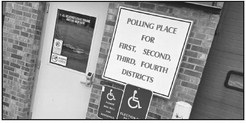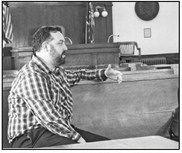Don’t leave communities with big box eyesores


Empty big box stores surrounded by acres of crumbling blacktop parking lots litter communities throughout Wisconsin. Collectively, these properties are classifi ed as brownfields.
The reasons for these empty buildings are varied. Some chains have closed down completely, others moved to bigger locations a few miles down the road, others fell victim to shifts in traffic patterns — turning once prime commercial real estate into a backwater.
Regardless of why these building sit vacant, they present a real challenge to communities by creating blight. The vacant buildings cast a pall of decay over otherwise thriving areas. This is further aggravated by the vacant stores typically being in high visibility areas. Often at the same time these stores sit vacant, new construction is taking place elsewhere in the community.
Given the routine investment of public money in the form of developer’s agreements and utility work for commercial development projects, the public should not be left holding the bag when the development goes belly-up as it was in Sturgeon Bay. Last week the state announced a $250,000 grant to the city to help with the redevelopment of a long-vacant former Younkers store there. State and local taxpayers shouldn’t be forced to bear the burden of redevelopment costs.
Wisconsin should apply the same standards it does for gravel pit operators to large retail or industrial developments. Under state law, gravel pit operators must have reclamation plans in place to show what they will do to restore the property after they are finished removing the gravel. How elaborate these plans are depends on the individuals, but the intent is to not leave rural communities with eyesores.
As a condition of the plans, gravel pit operators are required to provide a bond, escrow account or letter of credit that they are financially able to do the reclamation work.
Similar administrative rules and laws should be put into place for large-scale buildings over 100,000 square feet as part of the permitting process. These requirements should also be included as a condition of permits when existing large-scale retail spaces are renovated or expanded. Large retail buildings are often purpose-built for a particular tenant and present a significant challenge when attempting to market them to other retailers.
Parking lots and big box stores are not forever. There have been redevelopment success stories such as in Wausau where the Grand Avenue Kmart site was turned into residential housing and in Stevens Point where the former Kmart has been redeveloped for apartments. Other structures have been divided into smaller retail units or converted to light industrial or warehouse use. All of these are better than watching a vacant building decay.
Within any redevelopment plan there needs to be timelines to ensure that buildings do not just sit vacant without any real marketing or redevelopment efforts taking place. These timelines must be flexible enough to accommodate changing economic conditions, but must provide teeth for local and state governments to ensure that redevelopment efforts will take place.
The best way to deal with brownfields is to prevent them from being formed in the first place.




